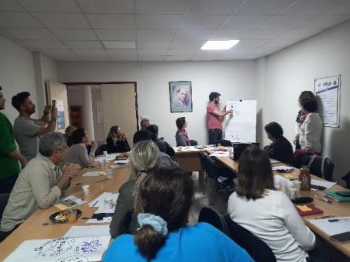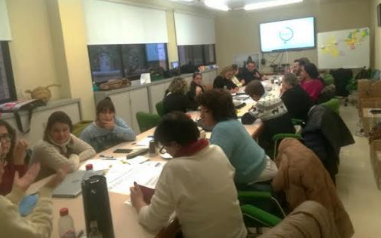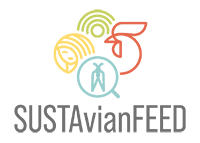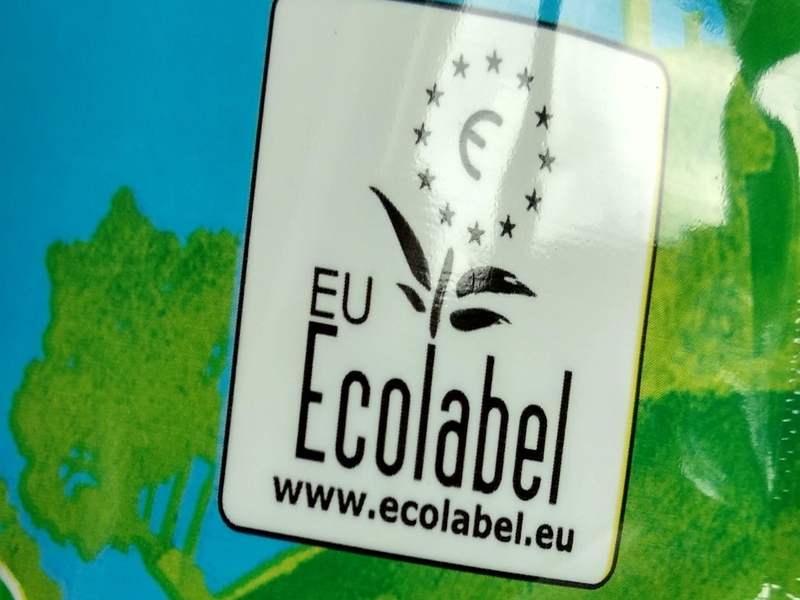In the realm of sustainable food production, initiatives like the SUSTAvianFEED project play a vital role in fostering environmentally conscious practices. Part of the PRIMA programme and supported by the European Union, this project focuses on the development of an alternative and sustainable animal diets, trying to explain its high value primarily to consumers. How? Starting with the animal based products they consume and including an effective ecolabel analysis for food products. The aim is not only to promote sustainability but also to provide people with valuable information about the products they choose.
Laying the Groundwork and setting the context
The European ecolabel movement dates back to 1992, marking the advent of sustainable consumer choices. This label, known as the ‘EU flower’, has grown to signify sustainable choices for environmentally conscious consumers. The EU Ecolabel now spans diverse categories, with experts verifying sustainable ingredients and processes. The project aligned well with the EU’s Green Deal, emphasizing a fair, healthy, and sustainable food system, and the Farm to Fork Strategy to reduce environmental impacts.
Since its inception, the Consortium behind the SUSTAvianFEED project has been dedicated to spreading awareness about its activities and achievements. Among the objective, one is particularly clear: gather insights and information to design an impactful ecolabel, catering to various stakeholders such as smallholders, academia, private sector entities, consumers, and the public sector.
Internal Workshop and Partner Activities

Collaboration was at the heart of this project. The Consortium organized workshops, interviews, and surveys, involving partners like ALIA, UMU, UNITO, ISA-CM, and EGE. For instance, UMU and ALIA held two workshops and engaged with the national ministry of consumption. UNITO conducted six semi-structured interviews and hosted two workshops. EGE conducted 11 semi-structured interviews and an additional workshop. ISA-CM took part with nine interviews, three surveys, and one workshop. Moreover, an internal workshop was conducted during the Consortium meeting, adding to the wealth of insights.
The internal workshop was a crucible of ideas, with various considerations emerging for the ecolabel’s design. The discussions revealed key insights:
Advocacy for eco-labelling to drive government action:
Advocating for eco-labelling serves as a catalyst for government involvement in sustainability efforts. When consumers actively seek products with recognizable eco-labels, it sends a clear message to authorities about the demand for environmentally friendly and ethically produced goods. Governments, influenced by consumer choices, are more likely to establish policies and regulations that encourage industries to adopt sustainable practices.
Support mechanisms like subsidies for farmers to facilitate their transition:
Transitioning to sustainable practices can be financially challenging for farmers, especially smallholders. By proposing subsidies or financial incentives, the project acknowledges the economic burden farmers might face. Subsidies encourage farmers to make the shift to sustainable methods by offsetting some of the costs. This support accelerates the adoption of sustainable agriculture, benefitting both the environment and the livelihoods of farmers.
The necessity for regulations mandating sustainability practices in the industry:
While voluntary eco-labels are important, regulations play a crucial role in ensuring a level playing field. Mandatory regulations set a minimum standard for all producers, preventing greenwashing and ensuring that products labeled as sustainable genuinely adhere to certain criteria. Such regulations bolster consumer trust in eco-labels and contribute to overall industry transformation towards sustainability.
A call for a simple, volunteer-based ecolabel to avoid confusion:
The simplicity of an ecolabel is vital in today’s complex market. Consumers are bombarded with various labels and symbols, causing confusion. A straightforward, easily recognizable label that clearly indicates a product’s sustainability status helps consumers make quick and informed decisions. Furthermore, a volunteer-based label maintains its authenticity, ensuring that only those genuinely committed to sustainability participate.
The preference for a label without complex numerical indicators:
Numerical indicators might discourage consumers from engaging with eco-labels, especially if the metrics are hard to understand. A label without intricate numerical values ensures that consumers don’t feel overwhelmed or alienated. Instead, using simple and relatable symbols or color codes effectively conveys information about the product’s sustainability, making it accessible to a wider audience.
A holistic approach integrating social, environmental, and health aspects:
Sustainability encompasses more than just environmental considerations; it also encompasses social and health dimensions. Incorporating all three aspects in the ecolabel reflects a comprehensive understanding of sustainability. Consumers are increasingly aware of the interconnectedness of these factors. Thus, a holistic label ensures that consumers have a clearer picture of a product’s overall impact, making them more likely to align their purchases with their values.
In essence, these points collectively emphasize the importance of a well-designed ecolabel that goes beyond aesthetics. It should encourage policy changes, support sustainable transitions, ensure credibility, provide clarity, and consider the multifaceted nature of sustainability. Such a label has the potential to drive significant positive change in the market and consumer behavior.
Themes and Aspects to be Included

In defining the ecolabel, the workshops spotlighted crucial aspect as:
- Social considerations like fair trade, gender equality, and community benefits.
- Environmental elements, encompassing biodiversity, circularity, and resource preservation.
- Animal welfare and health aspects.
- Accessibility to product information and narrative story of the product through QR codes.
The intention was clear: create an ecolabel that encapsulates a product’s journey and impact comprehensively.
Next steps
Now is the time for action: the internal workshops led to the conceptualization of potential ecolabel designs. These designs will incorporate elements like gradients of color, QR codes, images depicting sustainability, CO2 emissions indicators, and symbols representing various sustainability aspects.
Each partner will contribute with unique perspectives tailored to their regions. For example, in their analysis, Spain focused on environmental and social aspects, emphasizing a recognizable color scheme. Tunisia emphasized a holistic approach with specific references to cultural and social factors. Italy stressed credibility, while Turkey tackled challenges like low label literacy and policy alignment.
Project’s collaborative approach encompasses several crucial steps in the development of an innovative ecolabel.
This process involves designing new labels through collaborative input, followed by rigorous testing alongside existing labels. Engaging consumers will be a pivotal aspect, achieved through online polls and surveys to ensure the label’s resonance with their preferences. Once refined, the chosen label will be finalized, reflecting a synthesis of collective insights. The culmination of this endeavor will entail reporting the comprehensive process and the resulting recommendations.








Leave a Reply
You must be logged in to post a comment.